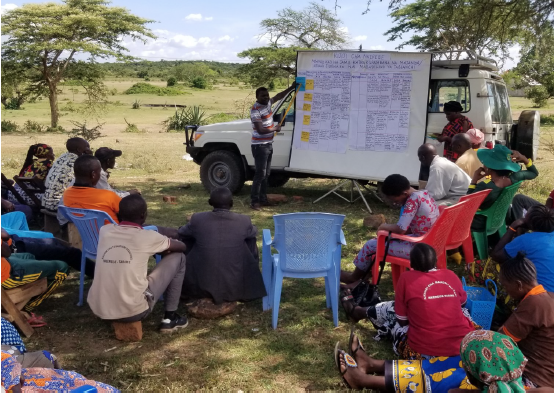Transforming Spice Production Through Savings, Lending, and Organic Agriculture
.jpg)
A Case Study of Numbini Vanilla Group Member
Overcoming Low Productivity, Poverty, and Lack of Lucrative Market in Morogoro, Tanzania
Boniface Paskali Mkulani, a member of Numbini Vanilla Group, is a spice farmer in Morogoro district, Tanzania. With two children and one wife to support, Boniface heavily relies on agriculture, particularly mint, vanilla, and cloves production. However, like many other small-scale farmers in Tanzania, Boniface faced challenges such as low production, poverty, and lack of lucrative market for his products.
In 2017, Boniface joined the Numbini Vanilla Group, one of the most promising spice groups under the USP II project, which provided him with training on organic agriculture production, entrepreneurship, and savings and lending. Through the project, Boniface and other group members were able to access a savings and lending component, which enabled them to save money and obtain low interest rate loans.
In 2021, Boniface borrowed 500,000 TZS from the savings and lending component and invested it in mint production. After four months, he received a profit of 1,000,000 TZS, which he used to purchase three acres of land for growing spices and to purchase water pipes to irrigate his plots during the dry season. By sharing the irrigation systems with neighboring farmer groups, Songambele and Numbini, Boniface was able to increase their productivity and profitability as well.

According to Boniface, the savings and lending component of the USP II project has been a game changer for him and other farmers in the group. The loaning procedures are straightforward and loans can be obtained quickly, providing farmers with access to capital to invest in their businesses.

The impact of the USP II project on Boniface's life and the lives of other small-scale farmers in Tanzania is evident. Through organic agriculture production and savings and lending, farmers are able to increase their production, profitability, and resilience to market shocks. This success story is made possible by the kind support of the Austrian Development Agency, Land Voralberg, and Fester Foundation, who have invested in the USP II project and the future of small-scale farmers in Tanzania.








